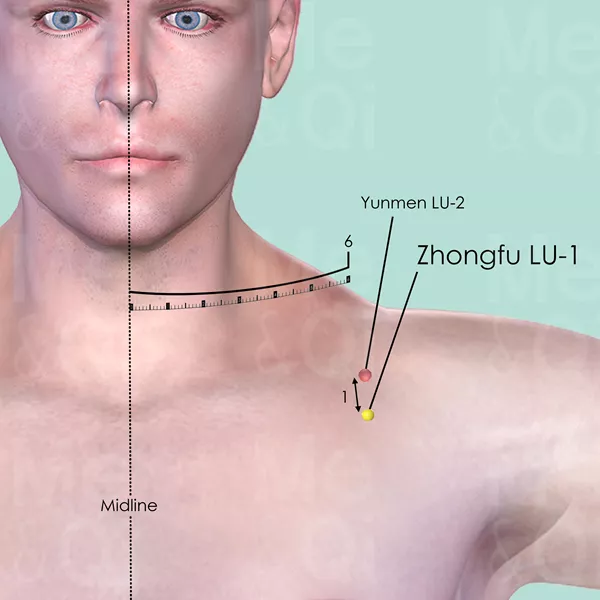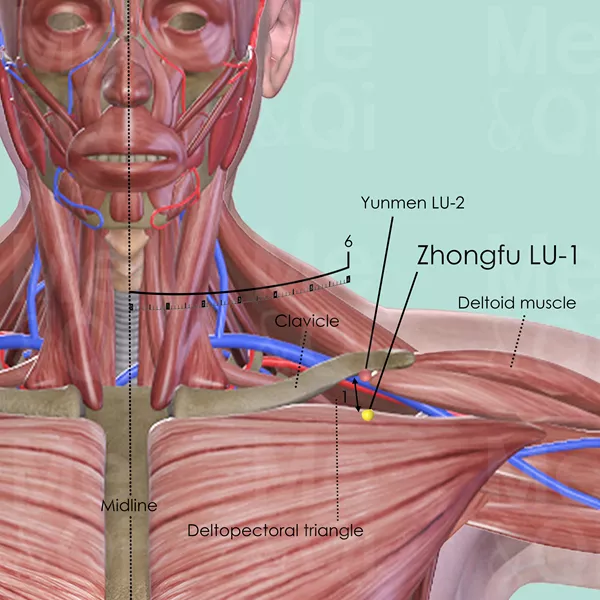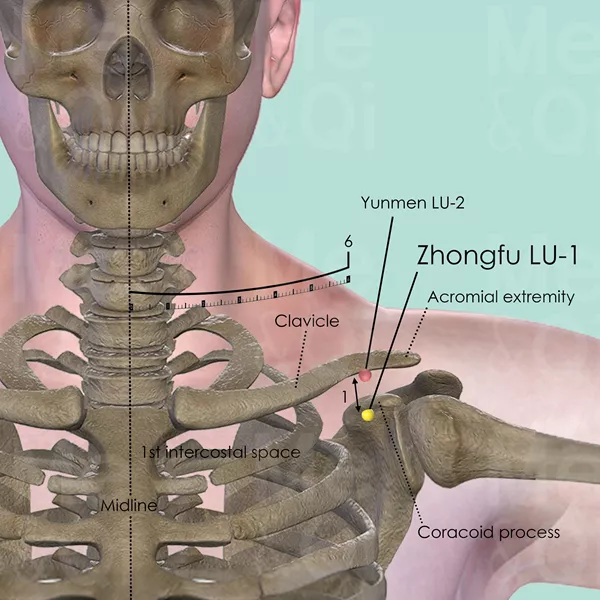Zhongfu LU-1
Chinese: 中府
Pinyin: Zhōng Fǔ
Location
On the lateral aspect of the chest, in the 1st intercostal space, 6 cun lateral to the midline, 1 cun inferior to Yunmen LU-2.
Below the acromial extremity of the clavicle, slightly medial to the lower border of the coracoid process.
How to locate
To help to locate the deltopectoral triangle, ask the patient to extend their hand forwards whilst you apply resistance to it. It is bordered on top by the clavicle and laterally by the coracoid process (within the deltoid muscle).
At the centre of the triangle, locate Yunmen LU-2. From there, palpate along the border of the deltoid for 1 cun and find Zhongfu LU-1, which will be in the first intercostal space approximately 6 cun lateral to the midline. Finding the first intercostal space is easy: locate the costal cartilage of the second rib, the first intercostal space is just above it.
Main actions
- Promotes the descending of Lung Qi and stops cough
- Resolves Phlegm from the Lungs
- Disperses fullness from the chest and stops chest pain
Needling
Insert obliquely by 0.5 to 1 cun in a cranial (approximately 45°) and lateral direction towards the coracoid process.
Caution: deep perpendicular or oblique insertion carries a substantial risk of causing a pneumothorax.
Commentary for Zhongfu LU-1
This point is mostly used to clear Excess of all kinds from the Lungs, whether due to Exterior pathogenic factors (e.g. Wind-Cold or Wind-Heat) which penetrate in the Lungs, or to internally generated disharmonies (e.g. Phlegm-Heat, Qi Stagnation, etc.).
In particular, it is very well indicated for cough caused by retention of Phlegm in the Lungs.
The point isn't normally used when the invasion is still on the Exterior but, since it has a good effect on stopping cough, it can be used in the early stages of invasion if cough is a prominent symptom. In that case it's used in conjunction with points that release the Exterior.
LU-1 is also effective in treating chest, shoulder or upper back pain if they result from a Lung Channel dysfunction, such as Lung-Heat, Damp-Phlegm or Phlegm-Heat obstructing the Lungs.



